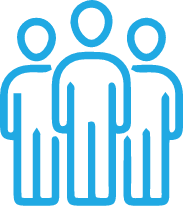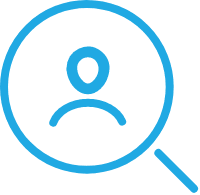By Bill Current, President and Founder of Current Consulting Group (CCG)
This information is provided for educational purposes only. Reader retains full responsibility for the use of the information contained herein.
The legalization of marijuana and its direct impact on the workplace garners a lot of attention, and rightfully so. According to the 2022 Quest Diagnostic Drug Testing Index, more workers are testing positive for marijuana than ever before.
- “Positivity rates for marijuana in the general U.S. workforce, based on more than 6 million urine tests, continued an upward climb, increasing 8.3% (3.6% in 2020 versus 3.9% in 2021), the highest positivity rate ever reported in the DTI. Over five years, positivity for marijuana in the general U.S. workforce increased 50% (2.6% in 2017 versus 3.9% in 2021).” i
Yet, according to the federal government there are many more alcohol users and abusers in the U.S. than marijuana users. The 2021 National Survey on Drug Uses and Health found that:
- Nearly 60 million Americans 12 and older admit to using illicit drugs
- More than 138 million people admit to being current alcohol users with…
- 61.6 million being classified as “binge” drinkers (5 or more drinks on at least one occasion in the past month) and
- 17.7 million being heavy drinkers (5 or more drinks on at least 5 occasions in the past month). ii
Alcohol is the single most used and abused drug in America. According to the National Institute on Alcohol Abuse and Alcoholism (NIAAA), nearly 14 million Americans (1 in every 13 adults) abuse alcohol or are alcoholics. Several million more adults engage in risky drinking patterns that could lead to alcohol problems. iii
Alcohol Abuse and the Workplace
Many employed Americans with a drinking problem consume alcohol on the job. A survey of employees conducted by American Addiction Centers found that 14.7% of at-home workers and 3.3% of other employees admit to being “high” on the job every week. iv
Workplace alcohol abuse has a direct impact on safety and injuries. According to the National Council on Alcohol and Drug Dependence (NCADD):
- Workers with alcohol problems are 2.7 times more likely than workers without drinking problems to have injury-related absences.
- A hospital emergency department study found that 35 percent of patients with an occupational injury were at-risk drinkers.
- [Breath] alcohol tests detected alcohol in 16% of emergency room patients injured at work. v
NCADD also reports:
- Analyses of workplace fatalities showed that at least 11% of the victims had been drinking.
- Large federal surveys show that 24% of workers report drinking during the workday at least once in the past year.
- 20% of workers and managers across a wide range of industries and company sizes report that a coworker’s on- or off-the-job drinking jeopardized their own productivity and safety. vi
Headlines from around the country would seem to concur:
- “Amazon driver charged with OVI after Solon crash” (Ohio)
- “School bus driver charged with DUI” (Arizona)
- “School bus driver arrested after driving drunk with students onboard, making stop at McDonald’s” (New York)
- “Drunk pilot pulled off JetBlue flight, police say” (New York)
- “Oregon school bus driver charged with DUI after crashing with 10 students on board”
- “Tennessee school bus driver charged with DUI after crash”
- “Moving Truck Driver Arrested on DUI Complaint After Owasso Crash” (Oklahoma) vii
The Pandemic’s Impact
Numerous reports indicate that the COVID-19 pandemic has made the problem of substance abuse and its impact on the workplace worse. One year into the pandemic, an annual report revealed a significant increase in alcohol and other substance use affecting 49% of American workers:
- “Of the 49% of workers who reported struggling with some level of addiction, the number of workers reporting lower productivity or missed work because of substance abuse or addiction has nearly doubled since 2019…
- “With 36% further reporting that it has affected their work more since the pandemic began.”
- Nearly half of full-time workers now report problem use of alcohol, drugs or prescription medication, and 19% report at least weekly usage.
- “Alcohol remains the most common substance abused by workers.” viii
According to a 2022 report by LifeWorks and the Hazelden Betty Ford Foundation, 31% who drink alcohol have increased their consumption since the pandemic began and 29% who use drugs reported an increase in drug use. ix
What Workplace Alcohol Abuse Looks Like
Many sources highlight the outward signs and symptoms of alcohol abuse at work, including:
- Sleeping while working
- Being tardy or not showing up
- Poor decision making
- Confrontational behavior with supervisors and coworkers
- Unintentional injuries to oneself or others
- Appears hungover or is still intoxicated
- Lack of coordination
- Has bloodshot or glossy-looking eyes
- Slow pupil response
- Inability to complete work assignments
- Starts to sweat heavily
- Slurs speech
- Becomes nauseous and pale x
Alcohol Testing
Because of the direct effects of alcohol abuse on the workplace, employers have a right and an obligation to take steps to address the problem. This can include screening employees for alcohol following accidents and when reasonable suspicion exists that an employee is on the job under the influence of alcohol. It is important for employers to understand:
- No state prohibits employers from conducting alcohol testing when such testing is conducted in accordance with state or federal laws or to comply with government-mandated alcohol testing.
- Some states require alcohol testing under certain circumstances and may limit or restrict it under other circumstances.
- Some states require workplace alcohol tests to be conducted in accordance with specific guidelines, which often mirror federal guidelines (See 49 CFR Part 40, Subparts J, K, L, M and N).
- The U.S. Dept. of Transportation drug and alcohol testing regulations require alcohol testing in specific situations and always pre-empt any state law conditions.
While the Americans with Disabilities Act (ADA) considers a current alcohol abuser to have a disability and is thus protected under the ADA, employers in all 50 states still have the right to:
- Prohibit employees from consuming alcohol while on the job, and
- Prohibit employees from being under the influence of alcohol at work. xi
An employer may be required under the ADA to make some accommodations for an alcoholic to attend counseling appointments. For example, the ADA allows employers to “discipline, discharge or deny employment to an alcoholic whose use of alcohol adversely affects job performance or conduct.” xii
The Equal Employment Opportunity Commission (EEOC) has issued directives relative to alcohol testing for employees and job applicants and employers should review these policies very carefully to ensure complete compliance. The agency also provides numerous examples or scenarios to illustrate under what circumstances alcohol testing may be permitted and/or when accommodations must be granted.
Alcohol Testing Methods
Today there are several accurate and scientifically sound alcohol testing methods, which include:
- Evidential breath testing (EBT)
- Permitted by the U.S. Dept. of Transportation (DOT) as an alcohol screen and required for a confirmation test
- Permitted by most states outside of DOT testing
- Some jurisdictions may only permit the use of devices approved by DOT’s Office of Drug & Alcohol Policy & Compliance (ODAPC). (See: “Approved Screening Devices to Measure Alcohol in Bodily Fluids” xiii and “Approved Evidential Breath Measurement Devices” xiv
- Non-evidential breath tests
- Permitted for an alcohol screen; positive results must be confirmed with an EBT device for DOT purposes and in some states
- Check individual state laws as some states have specific conditions for the use of EBT devices
- Some jurisdictions only permit the use of devices approved by ODAPC
- Saliva alcohol screens
- Permitted as a screen only under the DOT regulations
- Permitted by most states though some conditions may apply
- Some jurisdictions only permit the use of devices approved by ODAPC
- Blood
- May be permitted under limited circumstances, though not in all states
- In some circumstances, employers may rely on a blood alcohol test conducted by medical personnel at the scene of an accident and/or in a hospital
A relatively new alcohol screening method introduced by SOBRsafe in May at the annual conference of the National Drug and Alcohol Screening Association (NDASA) involves detecting alcohol in a person’s system through the skin. The touch-based alcohol detector makes it possible to screen workers quickly and frequently without collecting a breath, saliva, or blood sample. xv
Conclusion
A 2015 study found that marijuana users commonly drink alcohol while they are consuming cannabis. According to the study:
- “The prevalence of simultaneous use was almost twice as high as concurrent use, implying that individuals who use both cannabis and alcohol tend to use them at the same time. Furthermore, simultaneous use was associated with increased frequency and quantity of alcohol use. Simultaneous use was also the most detrimental: compared to alcohol only, simultaneous use approximately doubled the odds of drunk driving, social consequences, and harms to self. The magnitudes of differences in problems remained when comparing drunk driving among simultaneous users to concurrent users. xvi
What’s the point? As marijuana legalization continues to spread across the country resulting in many more people using marijuana, a simultaneous increase in alcohol abuse can be expected. As such, employers have a vested interest in ensuring that their workers are alcohol-free while on the job. Alcohol screening when and how permitted is one of the most effective ways for employers to deter workers from using alcohol on the job or being at work while under its influence.
Endnotes:
i Workforce Drug Test Positivity Climbs to Highest Level in Two Decades, Finds Quest Diagnostics Drug Testing Index Analysis. Quest Diagnostics Drug Testing Index. March 2022. https://newsroom.questdiagnostics.com/2022-03-30-Workforce-Drug-Test-Positivity-Climbs-to-Highest-Level-in-Two-Decades,-Finds-Quest-Diagnostics-Drug-Testing-Index-Analysis
ii SAMHSA releases 2020 National Survey on Drug Use and Health. Substance Abuse and Mental Health Services Administration. Oct. 2021. https://www.samhsa.gov/newsroom/press-announcements/202110260320
iii Alcoholism in the Workplace: A Handbook for Supervisors. U.S. Office of Personnel Management. https://www.opm.gov/policy-data-oversight/worklife/reference-materials/alcoholism-in-the-workplace-a-handbook-for-supervisors/
iv The Prevalence of Substance Abuse in the Workplace. American Addiction Centers. May 2022. https://drugabuse.com/addiction/substance-abuse-workplace/
v Alcohol Awareness and the Workplace. All One Health. April 2019. https://allonehealth.com/alcohol-awareness-and-the-workplace/#:~:text=Some%20facts%20about%20alcohol%20in%20the%20workplace%20from%20NCADD%3A&text=Analyses%20of%20workplace%20fatalities%20showed,once%20in%20the%20past%20year
vi Ibid.
vii Alcohol Headlines. SOBRsafe. 2022. https://sobrsafe.com/alcohol-headlines/
viii 49% of U.S. Workers Are Struggling with Alcohol and Substance Abuse. BusinessWire. April 2019. https://www.businesswire.com/news/home/20210401005098/en/49-of-U.S.-Workers-Are-Struggling-with-Alcohol-and-Substance-Abuse
ix Americans increasing substance use to cope with mental strain; parents at highest risk. Hazelden Betty Ford Foundation. June 2021. https://www.hazeldenbettyford.org/about-us/news-media/press-release/mental-health-index-report
x Alcoholism in the Workplace. Alcohol Rehab Guide. https://www.alcoholrehabguide.org/resources/alcoholism-workplace/
xi Are alcoholics protected by the ADA? ADA National Network. https://adata.org/faq/are-alcoholics-covered-ada
xii Ibid.
xiii https://www.transportation.gov/odapc/Approved-Screening-Devices-to-Measure-Alcohol
xiv https://www.transportation.gov/odapc/Approved-Evidential-Breath-Measurement-Devices
xvi Simultaneous vs. concurrent use of alcohol and cannabis in the National Alcohol Survey. National Library of Medicine. May 2015. https://www.ncbi.nlm.nih.gov/pmc/articles/PMC4399000/
© 2010-2022 The Current Consulting Group, LLC – No portion of this article may be reproduced, retransmitted, posted on a website, or used in any manner without the written consent of the Current Consulting Group, LLC. When permission is granted to reproduce this article in any way, full attribution to the author and copyright holder is required.












